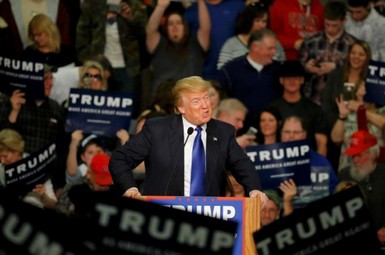The Fed Is Freaked Out about the Financial Markets — Because It’s Misreading the Situation
Early in the new year, on Sunday, January 3, Federal Reserve vice chair Stanley Fischer delivered a hawkish speech to the American Economic Association. Completely misreading the economy, which is woefully weak while inflation is virtually nil, Fischer strongly hinted that the Fed would be raising its target rate by a quarter of a percent every quarter for the next three years.
The next day the S&P 500 dropped 1.5 percent. In the week that followed, the broad index fell 6 percent. The week after that it fell over 2 percent. During that two-week period, the Dow Jones dropped 1,437 points.
The dollar went up. Oil plunged 21 percent. Raw material commodities dropped. And credit risk spreads in the high-yield junk market rose substantially.
Actually, it was a global event, as stock markets around the world plunged. Utter chaos.
This past week, the Fed retreated in its FOMC policy statement. For the first time in a long while, it didn’t bother with a risk assessment between inflation and employment. The whole statement had a much softer tone. It reminded me of the prevent defense of the old Bill Parcells New York Giants.
Putting it more starkly, I’d say the Fed is completely freaked out by financial markets that are turning against it.
The central bank says its policies are “data driven.” But the recent FOMC statement suggests the Fed is looking at everything. It has a hundred indicators — domestic, international, jobs, and inflation. In truth, it doesn’t know what its next move is going to be because it can’t read the economy. Fed policy is opaque, confusing, and rudderless.
Take a look at the new GDP report for the fourth quarter of last year. A mere 0.7 percent growth. Across 2015, real GDP grew 1.8 percent. It’s not a recession. But any shock could push us into recession.
Business investment fell. Commercial building fell. Inventories fell. Inflation came in less than 1 percent.
Nominal GDP — real output plus inflation — registered a small 1.5 percent gain. In normal times, money GDP should be between 4 and 5 percent.
Perhaps most troublesome to the stock market and the economy is the decline in corporate profits. According to most estimates, profits are set to drop for the third straight quarter while business sales look to be falling for the fourth straight quarter. Add this to less than 1 percent economic growth, and the risk of recession is surely rising.
The recession threat is a risk, not a fact. But for Fed policy makers to tell us the economy is healthy is a complete misreading of the situation. And with ultra-weak economic growth and ultra-low inflation, how could the Fed, or any central bank, think about tightening policy?
Besides stocks, other market indicators are trying to tell the central bank: No More Rate Hikes. Copper is down 16 percent over the past year. Inflation expectations in the Treasury bond markets have fallen significantly. And the dollar over the past several years has increased roughly 30 percent.
A healthy King Dollar is a good thing, and so are falling energy prices. But enough is enough. More Fed rate hikes will raise the dollar and reduce energy prices so much that the economy will be completely disrupted. A stable, reliable greenback is a good thing. But let’s not press our luck.
Now, if the Fed were operating on a true price rule, it would keep the dollar where it is today for as far as the eye can see. In turn that would stabilize gold and other commodities and avoid further economic disruption.
In a speech back in 2014, former Fed head Paul Volcker argued for a rules-based monetary policy along with international currency cooperation. Right now we have neither. Europe and Japan have moved toward negative interest rates while the Fed threatens higher rates. Where is Volcker’s currency diplomacy? Nowhere to be seen.
Thankfully there’s a way out of this mess. Let the Fed keep interest rates and the dollar stable. No more tightening. Meanwhile, the Republican Congress can pass a significant tax cut for large and small businesses. Push the rate down to 15 percent for C-corps and S-corps. Provide easy repatriation of U.S. money overseas. And permit immediate tax write-offs for new-business-investment expenses.
Congress could also push for reduced regulatory burdens, although it looks like there’s no stopping the Obama administration’s unconstitutional march toward even greater regulations.
But a big business tax cut would be the most stimulative way to move the economy from near recession to 4 or 5 percent growth. That’s what we need. Put it together with a stable and reliable dollar, and we can move from pessimism to optimism.
It’s been done before. We can do it again.
